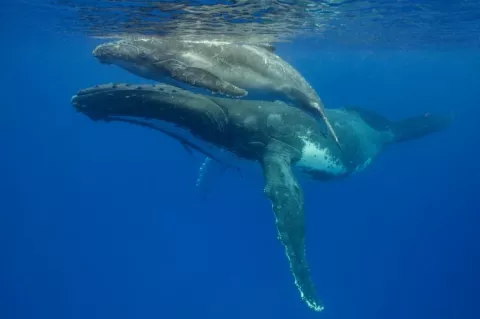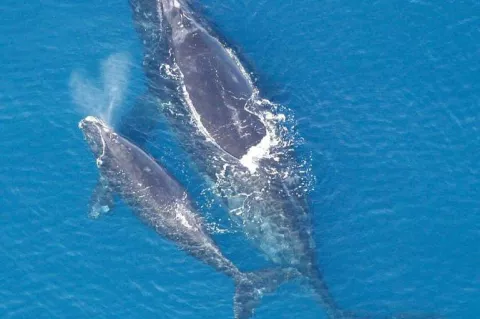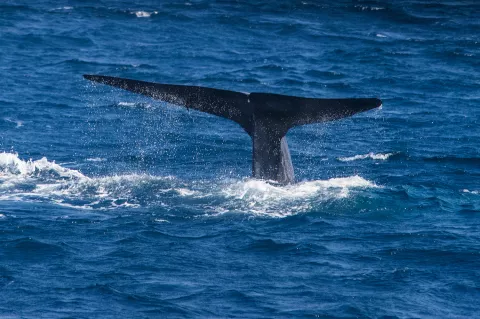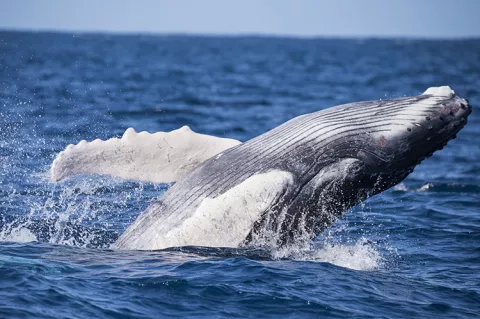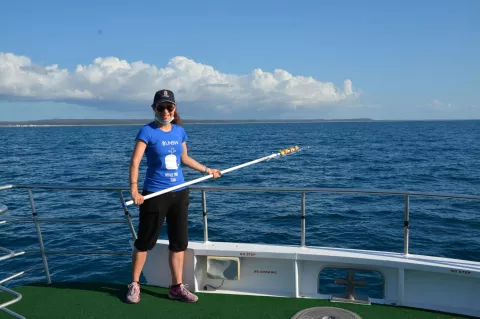Whale songs reveal existence of new blue whale population
There are different populations of blue whales worldwide, and each can be identified by its own whale songs.
A new population has been identified based on its unique whale song, recorded in three locations: the Arabian Sea coast of Oman, the Chagos Archipelago in the central Indian Ocean, and Madagascar in the southwest Indian Ocean.
This discovery was reported in the journal Endangered Species Research.



